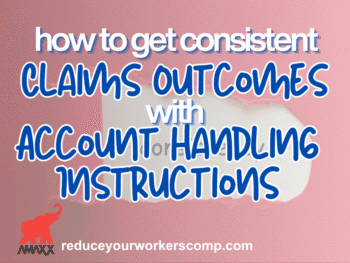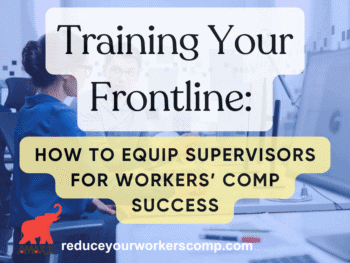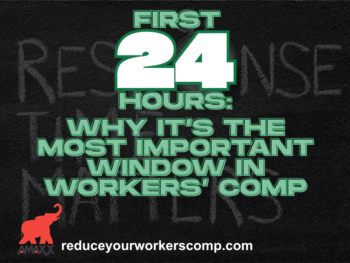If you create a structured survey, with a finite list of questions, and a finite list of possible responses, you are in a position to automatically identify the areas of deficiency, and provide initial pre-written recommendations. What best practices are your operating units or franchises missing that will decrease their workers compensatino costs? How does a state, for example, measure successful implementation at 200 agencies?
Some examples of workers compensation measurements:
1. A best practice profile – identifies current practices across the entire company.
2. Recommendations or specific suggestions for improvement in an action-item format.
3. A gap analysis — which best practices have largest gap e.g. 100% of business units have not implemented those practices.
4. A National WC Management Score – like a FICO credit score – to identify which best practices your company has implemented, and those which have not yet implemented best practices that are driving your workers comp costs up.
At the management level, you will want to tabulate results across multiple facilities or multiple supervisors in order to determine where you will get the most bang for your efforts! (WCxKit)
Moving beyond the process into results, your company most certainly wants to measure improvement by setting goals and tracking progress.
Examples of some of the areas that make sense for most organizations to track for improvement:
1. Returning 90% of injured employees to work within one to four days.
2. Keeping the cost per full-time equivalent (FTE) at about $350 – half the national average according to 2010 RIMS Benchmark Survey.
3. Keeping your lag time less than 24 hours, within 6 hours is preferable. (WCxKit)
4. An employer should always know HOW MANY employees that have OUT OF WORK, just like they know their own metrics such as for an airline how many flights are delayed, for a manufacturer how many lines are down, or for a bus company how many buses are off the road.
In fact, when you get to a topic like Cost per Full Time Equivalent head count, employers turn to workers’ compensation cost containment companies to benchmark their claim experience compared to peers in the same industry or the same state. Make sure YOU know your costs!
Author Rebecca Shafer, President, Amaxx Risks Solutions, Inc. has worked successfully for 20 years with many industries to reduce Workers’ Compensation costs, including airlines, healthcare, printing/publishing, pharmaceuticals, retail, hospitality and manufacturing. Contact: Info@ReduceYourWorkersComp.com or 860-553-6604.
FREE IQ Test: http://www.workerscompkit.com/intro/
WC Calculator: http://www.LowerWC.com/calculator.php
TD Calculator: http://www.LowerWC.com/transitional-duty-cost-calculator.php
Do not use this information without independent verification. All state laws vary. You should consult with your insurance broker or agent about workers' comp issues.
©2010 Amaxx Risk Solutions, Inc. All rights reserved under International Copyright Law. If you would like permission to reprint this material, contact Info@WorkersCompKit.com
















